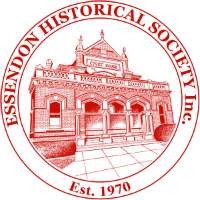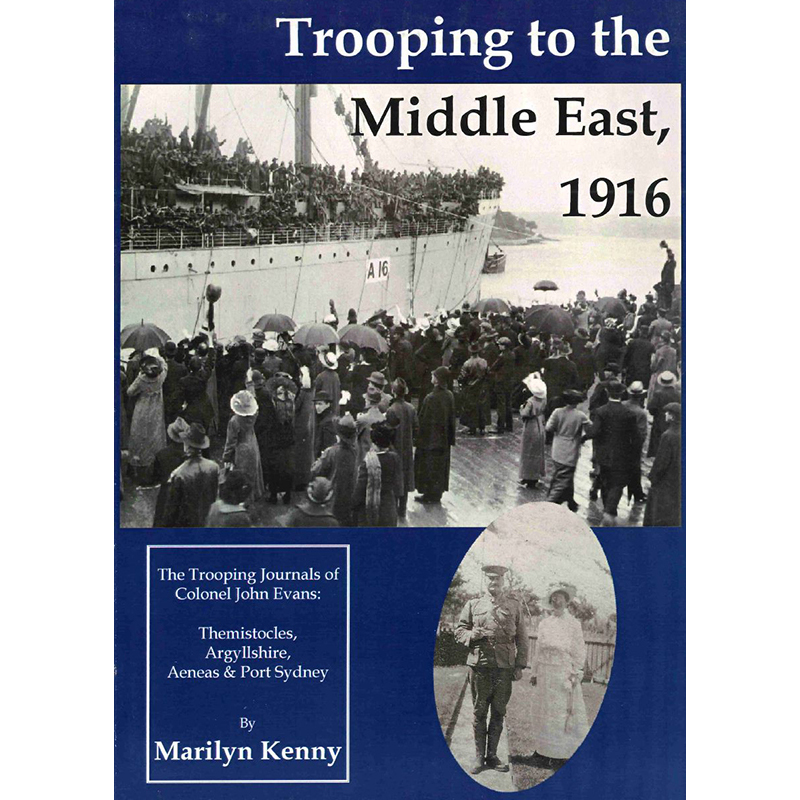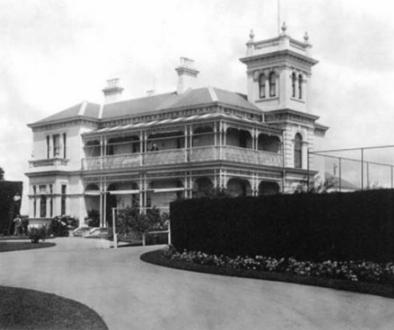Recollections of St Kinnord Street, Aberfeldie

Born in 1916, John Newman Dalton grew up at Wahronga, 11 Combermere Street, and from the age of 10, lived with his grandmother, Fanny, at the home his grandfather had built, The Grange, 28 St Kinnord Street. Later, he wrote his recollections of the Aberfeldie of his childhood:
In the time I lived there, one could walk up McCracken Street to Keilor Rd and see very little housing on the green onion weed-covered paddocks. I remember when the blocks on the corner of Combermere Street and Buckley Street, on the easterly side of Kinnord and Alma Streets and on the corner of Beaver Street and Buckley Street were all vacant. Three big corners: vacant! Next to my grandfather’s house, there were three vacant blocks, then there was Ziegel’s Aldebaran and then all vacant down to my Uncle Arthur’s place (Leonard Arthur Dalton) on the corner of Park Crescent.
The Moonee Ponds bus used to terminate at the corner of Park and Waverley Streets. The first Buckley Street red bus (operated by H.V. Memery, a member of the 1st AIF; his name and regimental colours were displayed on the outside of the bus on the driver’s right) was a Ford car with a round body so it could carry a couple of extra passengers when required. It was fitted with a continuous seat all the way around.
Originally, there was one shop in Buckley Street, around the corner from St. Kinnord Street. It was a mixed store. Soon after, another opened and was operated by Beveridges. After that, one-by-one, they came. Young’s butcher shop and the greengrocer one side and Glynn’s grocery on the other, then the bakery, later operated by D. H. E. Bessell. Then, Alan Beveridge operated a mixed store next to his mother’s shop, and on the other side, another butcher’s shop opened and was operated for some time by Prideaux, who at the time resided in a house at 24 St Kinnord Street on the corner of the lane. Later, more shops were established between Beaver and Aberdeen Streets.
Opposite 28 St Kinnord Street, there was a lot of vacant land which was next to Mrs Milne’s home. She kept many pomeranian poodles which did a lot of yapping and barking.
One day, I saw something in the distance in Buckley Street, up near the railway. It turned out to be a wooden church hall, mounted on a wooden lorry drawn by a large number of Clydesdale horses. They came down the hill all right, but you can imagine they needed all the horsepower they could muster to come up past Waverley Street, Aberfeldie Street, Combermere Street, then swing into St Kinnord Street.
It was eventually manoeuvred to the back of the block on the northern end. Later on, the red brick hall was built and cement letters were formed to be read as “St Andrew’s Parish Hall.” It was the intention to later build a fine church on the southern side of the land, but not enough parishioners materialised to make the proposal viable, and so in the meantime, tennis courts were built on the vacant land.
During my stay, it was not unusual to see a mob of about 5,000 sheep driven up St Kinnord Street on the way from Newmarket stock yards to the places further north where they would be agisted. On the other hand, sometimes on the way home from school, one had to get away from mobs of cattle being driven to Newmarket for sale.
Out west was Aberfeldie State School No. 4200, which I attended. Since it was surrounded by paddocks, it was not unusual while sitting in class to hear sheep baa-ing, and dogs barking, and drovers whistling while above that the songs of skylarks floated down. It was romantic to me, but sitting in class in June was not very romantic: it was extremely cold.
Many girls attending the High School in Buckley Street came from the south in little dog carts, each drawn by a pony. There was no direct bus service for them. These little square carts, with upholstered seats all around, had a little door to exit at the back, down two round fixed iron footplates. Those little vehicles carried four or five girls and came up Waverley, Alma and St Kinnord Streets to Buckley Street. They parked them at the block on the corner of St Kinnord Street. There was a high paling fence all round. To see them come and go was picturesque.
In 1925, few streets in the area were properly graded, but in 1926/7, there was a lot of activity in this regard. The motive power was provided by Clydesdale horses, which pulled scoops along the ground to move soil and one-yard drays to move heavier materials. Behind 26 St Kinnord Street, there was a block with a high paling fence all around and this is where the horses were tended in their off-hours.
At the top of Alma Street in Vida Street, there stands a mansion. It is probably still owned by the Catholic Church, but it was built by Mr. Ramsay, who invented Kiwi Boot Polish. He made a fortune from it. Prior to this, to polish a pair of boots (no men’s shoes in those days), it was necessary to have some blacking tablets and break them into pieces or powder before applying it to the boots with water and a brush. A messy business, so you can imagine that the polish received an enthusiastic reception.
Next to Ramsay’s, there was a big paddock with a wire fence around it. It stretched from Ramsay’s to Buckley Street, then up to Cooper Street and back to Ramsay’s back paddock. Mr Ramsay allowed my Grandfather to run some cows there.
In the back part of the pantry at 28 St Kinnord Street, there was a red brick floor. This was my Grandfather’s dairy and people could come to the side door of the house to buy milk.
The Southern Cross theatre was built in Buckley Street, near the intersection of Lincoln Road, and opened in 1927 with a film entitled “Viennese Nights”.
Thank you to James Dalton for sharing these memories with the Essendon Historical Society. Post Image is “The Grange”, St Kinnord Street, Essendon in January 1939 which was donated by Mr. Dalton.



